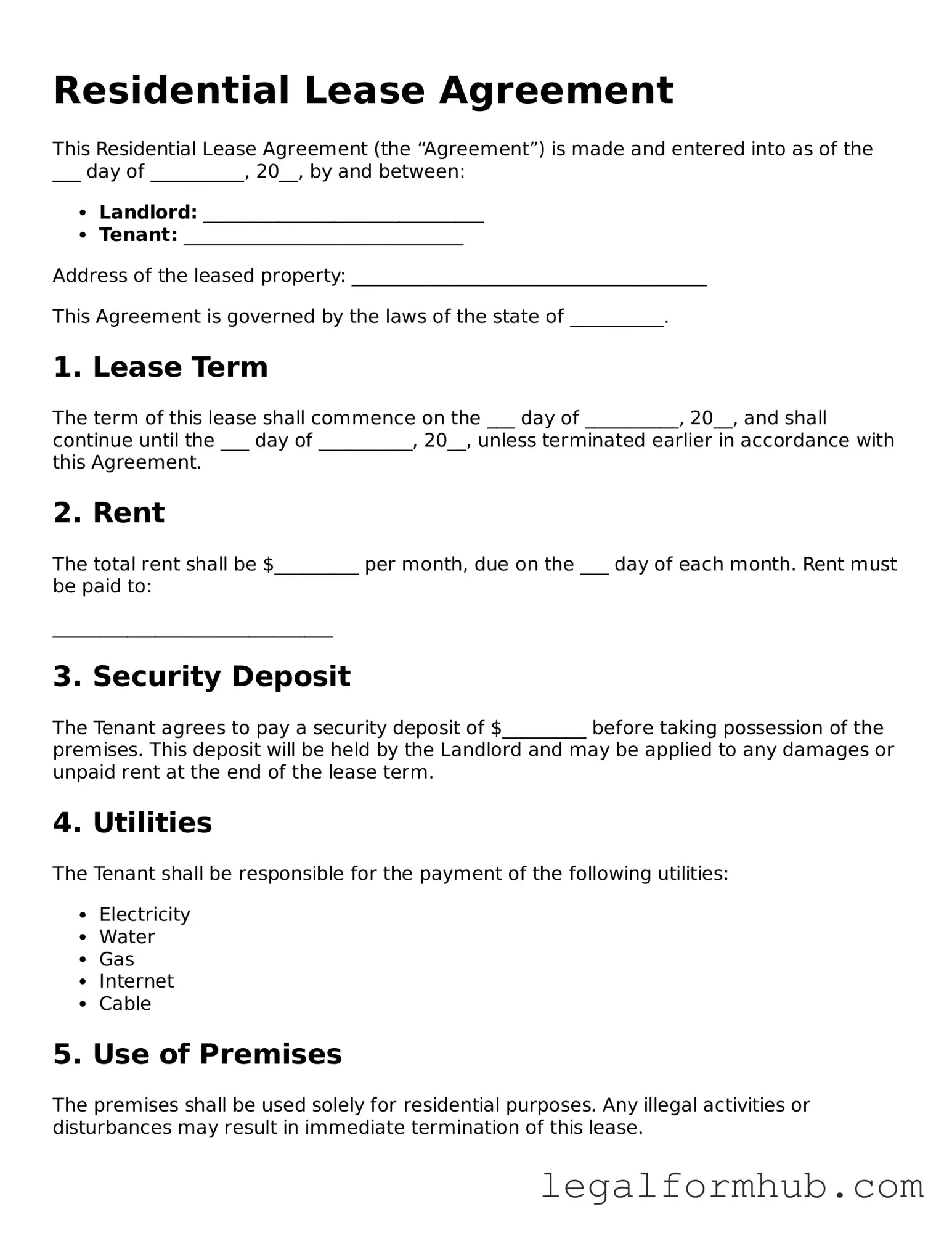A Rental Agreement is often confused with a Lease Agreement, but there are key differences. A Rental Agreement typically covers a shorter time frame, usually month-to-month, allowing for more flexibility for both parties. It outlines the same fundamental aspects, such as rent amount, payment terms, and responsibilities, but it provides less security for the tenant compared to a longer-term lease. This document is ideal for those who may need to move frequently or for landlords who prefer a more adaptable arrangement.
A Sublease Agreement is another document that shares similarities with a Lease Agreement. This type of agreement occurs when a tenant rents out their leased space to another individual, known as a subtenant. The original tenant remains responsible for the lease obligations, while the subtenant agrees to the terms set forth in the sublease. It is essential for both parties to understand their rights and responsibilities, as the primary lease still governs the relationship with the landlord.
A Commercial Lease Agreement is tailored for business use, differing from a residential lease in several ways. This document outlines the terms under which a business can occupy a commercial space. It typically includes clauses specific to business operations, such as zoning regulations, maintenance responsibilities, and modifications to the property. While it shares the basic structure of a residential lease, the focus on business needs makes it unique.
A Tenancy Agreement, similar to a Lease Agreement, is a legal document that outlines the relationship between a landlord and tenant. It specifies the terms of occupancy, including duration, rent, and rules governing the property. While often used interchangeably with a lease, a tenancy agreement may also refer to more informal arrangements, particularly in jurisdictions with less stringent legal requirements. Regardless, clarity in the terms is crucial for both parties.
A Rent-to-Own Agreement combines elements of a Lease Agreement and a purchase contract. This document allows tenants to rent a property with the option to buy it after a specified period. It typically outlines the terms of the rental, as well as the conditions under which the tenant can purchase the property. This arrangement can be beneficial for those who are not yet ready to buy but wish to work towards ownership.
A Roommate Agreement is particularly relevant for individuals sharing a rental space. This document outlines the responsibilities and expectations of each roommate, covering aspects such as rent division, utility payments, and house rules. While it may not have the same legal weight as a Lease Agreement, it helps prevent misunderstandings and conflicts, ensuring a harmonious living situation.
A Property Management Agreement is a document that outlines the relationship between a property owner and a management company. This agreement details the services the management company will provide, such as tenant screening, rent collection, and property maintenance. While it does not directly govern tenant-landlord relationships, it plays a crucial role in the overall management of rental properties, ensuring that leases are upheld and properties are well-maintained.
A Purchase Agreement is often used when a property is being sold. While it differs from a Lease Agreement, both documents share the goal of establishing clear terms for property use. A Purchase Agreement outlines the sale price, contingencies, and closing details, while a Lease Agreement focuses on rental terms. Understanding both documents is essential for anyone navigating real estate transactions.
For those looking to engage in activities with potential risks, completing a proper Release of Liability form is crucial. This document helps ensure that participants acknowledge the risks and agree to waive claims against organizers. By understanding the implications, individuals can participate with assurance.
A Maintenance Agreement, although distinct from a Lease Agreement, is essential for property upkeep. This document specifies the responsibilities of landlords and tenants regarding maintenance and repairs. While a Lease Agreement may touch on maintenance obligations, a Maintenance Agreement provides a more detailed framework for addressing property issues, ensuring that both parties understand their roles in keeping the property in good condition.
Finally, an Eviction Notice is a document that, while not similar in purpose, is related to Lease Agreements. It serves as a formal notification to a tenant that they are being asked to vacate the property due to lease violations, non-payment of rent, or other reasons. Understanding the eviction process and the rights of both landlords and tenants is crucial, as it often follows the terms outlined in a Lease Agreement.
